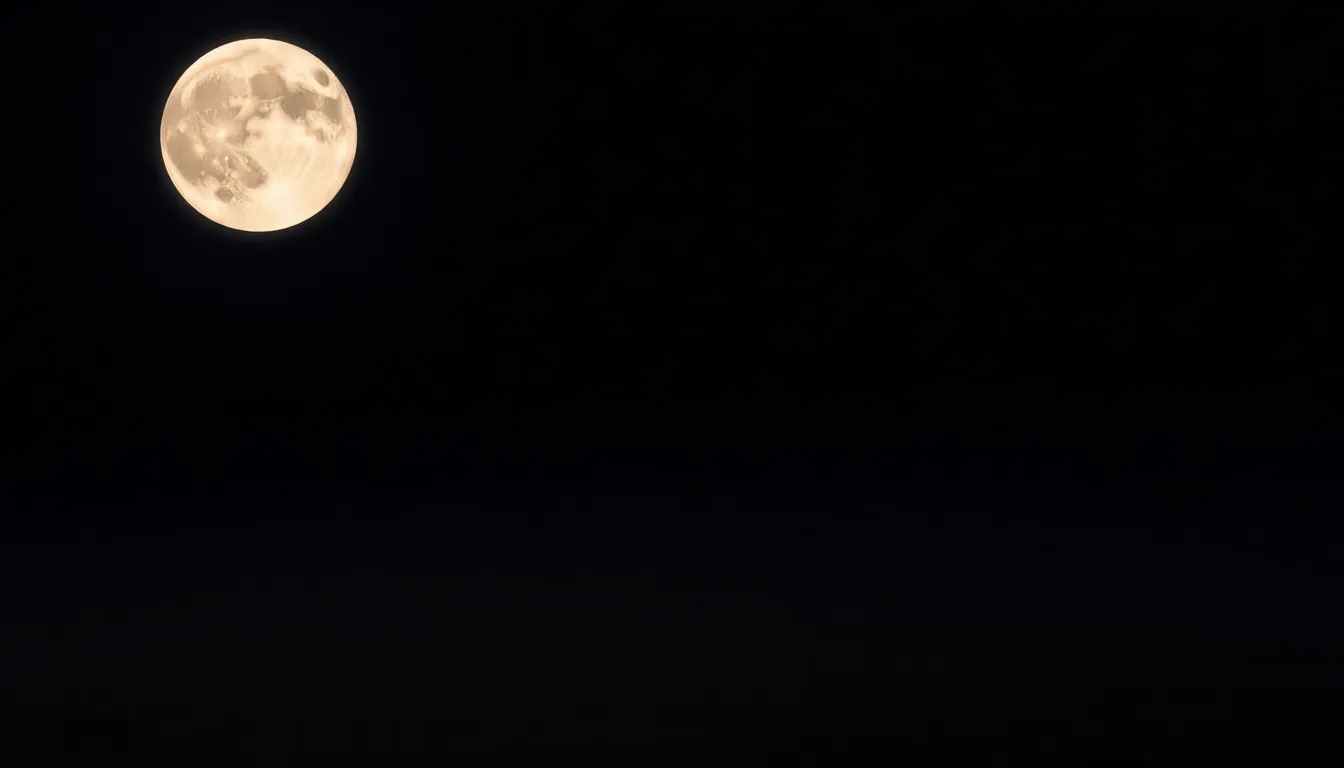On April 22, 2025, the moon will pull off another dazzling performance in the night sky. Whether you’re an amateur astronomer or just someone who enjoys a good moonlit stroll, this celestial event promises to be a sight worth seeing. With its shimmering glow and ever-changing phases, the moon has a way of captivating hearts and inspiring dreams.
Table of Contents
ToggleOverview of Moon Phases
Moon phases represent the different appearances of the moon as observed from Earth. Each phase occurs as the moon orbits Earth, changing its position relative to the sun.
There are eight primary moon phases recognized in the lunar cycle. New moon signifies the start, while the waxing crescent follows shortly after. First quarter features half of the moon illuminated, leading into the waxing gibbous phase. Full moon occurs when the entire face is visible, marking the peak of the lunar cycle.
Following the full moon, the phases shift to the waning gibbous. This is followed by the last quarter, where again half of the moon is visible, leading to the waning crescent phase. The cycle then returns to the new moon, completing the approximately 29.5-day lunar month.
Astronomers observe these phases for various reasons, including studies of lunar eclipses and the effects of lunar cycles on Earth. Enthusiasts often engage in sky-watching during full moons due to their brightness.
April 22, 2025, is significant as it will display a specific moon phase that captivates both casual observers and astronomers alike. This date may align with a full moon, rendering the sky particularly vibrant and offering optimal conditions for night observation.
Understanding these phases enhances appreciation for celestial events. They encourage interest in astronomy and can influence cultural and agricultural practices. Insights into moon phases provide valuable knowledge for planning outdoor activities, gardening, or stargazing throughout the year.
Moon Phase on April 22, 2025

On April 22, 2025, the moon will be in the waxing gibbous phase, approaching fullness. This stage occurs after the first quarter phase and is characterized by a steadily increasing illumination.
Waxing Gibbous Phase
During the waxing gibbous phase, the moon’s illuminated portion expands, offering an impressive sight in the night sky. This phase typically lasts about one week, gaining light until it reaches the full moon. Observers often note the visible details on the moon’s surface become clearer. The lunar features such as craters and maria stand out beautifully. Amateur astronomers find this phase ideal for telescopic observations, as shadows elongate, revealing more topographical features.
Visual Characteristics
The waxing gibbous moon displays a brilliant light shining over the landscape. As it illuminates the night, the moon’s surface appears more defined and detailed. Pale whites and soft greys dominate its color, though subtle variations may show in blue and yellow hues, depending on atmospheric conditions. Unlike the brighter full moon, this phase offers softer light, enhancing the beauty of the twilight sky. Observers often see the gibbous moon high in the sky, making it a focal point for stargazing and photography alike. The charm of the waxing gibbous moon captivates many who appreciate celestial wonders.
Importance of Moon Phases
Moon phases play a crucial role in various aspects of life. Different lunar stages affect not only the night sky but also influence culture and agriculture.
Astrological Significance
Astrology often correlates moon phases with personal traits and behaviors. Many believe that the waxing gibbous phase promotes growth and creativity, making it an ideal time for initiating new projects or setting intentions. People often look to lunar cycles when considering timing for significant life events. These phases are thought to impact emotions, with some phases linked to heightened energy levels and others associated with introspection. Thus, understanding these connections enhances individuals’ awareness of their own emotional landscapes.
Cultural Impact
Many cultures celebrate lunar phases through festivals and rituals. Full moons are often considered times of abundance, inspiring celebrations across various cultures. In ancient traditions, farmers relied on moon phases to determine planting schedules, linking agricultural success to lunar cycles. This relationship is still significant today, with many gardeners consulting lunar calendars when planning planting activities. Folklore also attributes mystical qualities to specific phases, establishing a vibrant narrative around the moon’s influence on human life. By recognizing these cultural impacts, one gains insight into our longstanding connection with the moon.
Observing the Moon
Observing the moon on April 22, 2025, offers an incredible opportunity to witness its beauty in the waxing gibbous phase. With optimal conditions for viewing, enthusiasts can appreciate its surface details and captivating glow.
Best Viewing Practices
Choose a location away from city lights for the best experience. Observers should aim to find a spot with a clear view of the horizon. Timing plays a crucial role; looking at the moon shortly after sunset often enhances the view, as twilight provides a stunning backdrop. Using binoculars or a telescope improves clarity and magnifies surface features. Regularly checking a lunar calendar helps plan observations around ideal dates, particularly during full and gibbous phases.
Tools for Observation
Binoculars offer a simple way to enhance the lunar viewing experience. For those seeking more detail, a telescope provides deeper insights into the moon’s craters and maria. Smartphone apps, equipped with augmented reality, allow users to identify lunar features and track its phases. A sturdy tripod can stabilize binoculars or cameras, ensuring a steady view during longer observation sessions. Many websites provide live feeds of lunar events, making them accessible for remote viewing.
April 22, 2025, promises to be a remarkable night for sky-watchers as the waxing gibbous moon takes center stage. This phase not only enhances the moon’s beauty but also provides a perfect opportunity for observation and photography. With its increasing illumination revealing intricate details on the lunar surface it invites both seasoned astronomers and casual observers to connect with the cosmos.
As the moon shines brightly against the twilight sky it serves as a reminder of humanity’s enduring fascination with celestial events. Whether through cultural celebrations or personal reflections the moon continues to inspire creativity and growth. Embracing this special night can deepen one’s appreciation for the universe and its rhythms.



